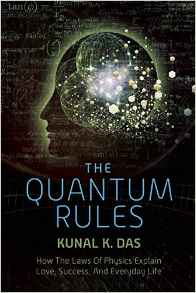
This page is still under construction ...
Kunal K. Das
Research
This Research is supported by the National Science Foundation (NSF)
Ultracold atoms in Ring-shaped lattices: Wrapping degenerate ultracold atoms around ring shaped traps can make the non-local quantum effects directly manifest in the macroscopic quantum states. An azimuthal lattice makes the system both more interesting and in some ways simpler by introducing a new length scale. The system allows a wide range of quantum mechanical effects to be investigated in a new exciting platform.
Coherent Transport Adiabatic Passage (CTAP) is an almost magical quantum effect whereby material entities like atoms and electrons can be transferred from one potential well to a non-adjacent potential well without ever having any significant presence in an intervening well. Although it looks on the surface like 'teleportation', it is actually the spatial analog of the well know effect known as Stimulated Raman Adiabatic Passage (STIRAP).
We recently proposed ways to implement this in a super-lattice, and applied it to transport one species of atom in the presence of another species, without the two interacting species ever overlapping, thereby avoiding significant mutual interactions. I along with my collaborators, Professor Tomáš Opatrný and Miroslav Gajdacz, am currently broadening these ideas to quantum information applications.
Movies corresponding to the snapshots shown in my recent paper (Miroslav Gajdacz, Tomáš Opatrný and Kunal K. Das, Transparent, Non-local, Species-selective Transport in an Optical Superlattice Containing Two Interacting Atom Species, Phys. Rev. A 83, 033623 (2011)) can be found at:
Lattice Coherent Adiabtic Passage.
Movies related a recent paper on using CTAP principle to create an atomtronics transistor and an universal quantum gate can be found at: Atomtronics Transistor for Quantum Gate
Mesoscopic transport with Ultracold Atoms: At low temperatures degenerate cold atoms in magneto-optic traps and optical lattices have quantum behavior similar to electrons and holes in solid state systems. But what is really important is that every aspect of cold atomic systems can be tuned and controlled over a wide range of parametric values including their mutual interactions. Therefore cold atoms have been very successfully used to model numerous phenomena previously limited to electronic systems. We recently proposed ways to simulate most mesoscopic transport mechanisms with ultracold atoms with a design that effectively mimics the quasi one-dimensional nanowires and the macroscopic contacts with micro-magnetic traps on atom chips, which was published in Phys. Rev. Lett. 103, 123007 (2009). This is being currently developed for experiments in the lab of my collaborator and coauthor Professor Seth Aubin.
Specifically, the exotic transport mechanism called 'quantum pumping' can be implemented in such a system, although there has been no success in condensed matter system till date despite much theoretical interest. Since quantum pumps operate by time varying potentials, it opens to door to study various scattering and transport due to such time-dependent potentials.
Movies related to our paper on a new kind off quantum pump can be found at:
A Quantum Paddlewheel
Stochastic Processes: I have applied stochastic calculus to study both quantum and classical systems. The underlying principles are universal in the sense that they can be applied to all arenas of study including physics, biology and economics which have noise or randomness in them. I am currently developing a broad algorithm based on the Fokker-Planck equation to model a wide range of physical phenomena that involve the escape from a region or time of first passage. This has very general implications in switching and gating mechanisms. I am also doing a comparative study of the classical Fokker Planck equation and the quantum Schrodinger equation with a view to understanding the transition from classical to quantum behavior specifically in the context of transport mechanisms.

